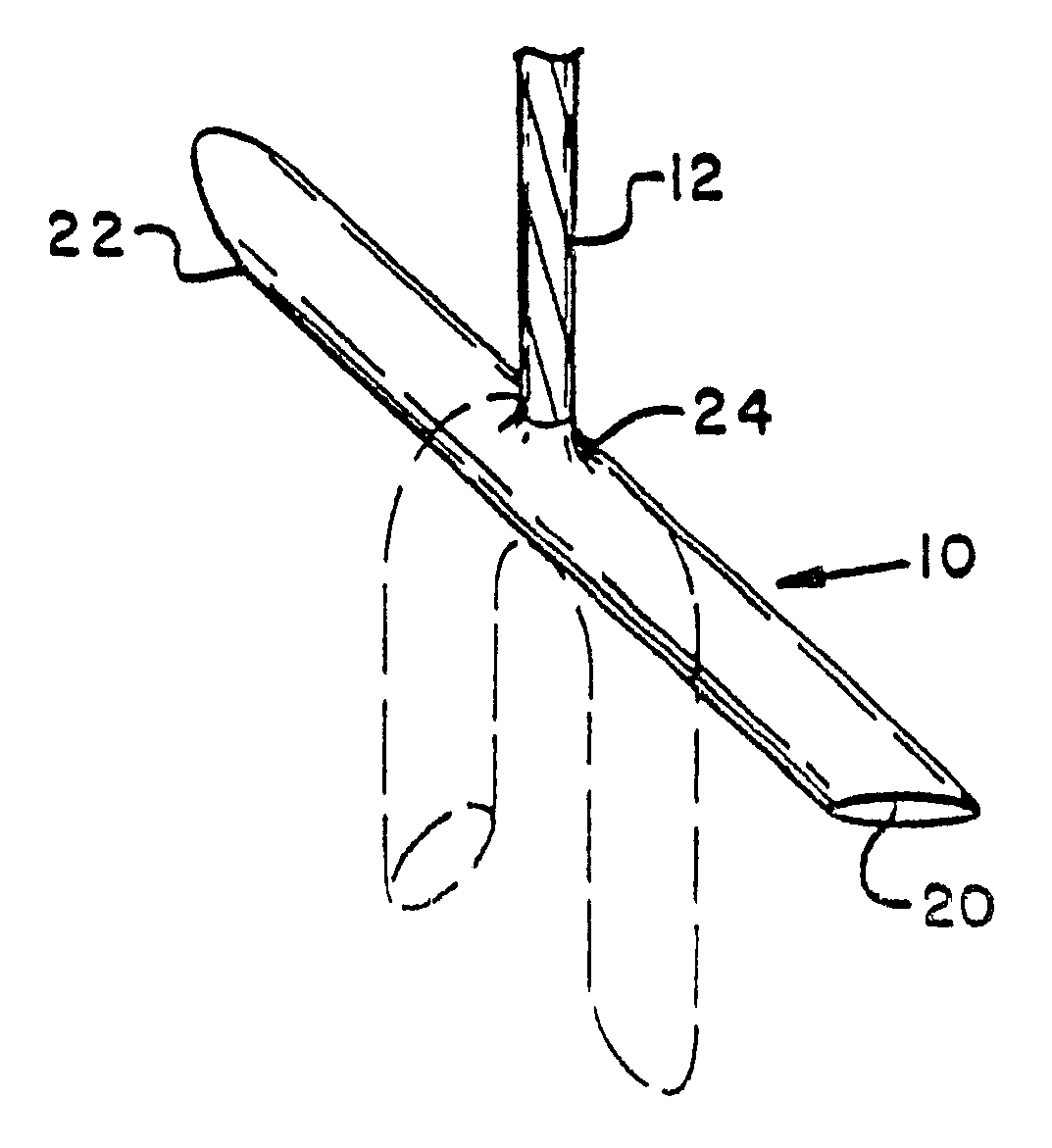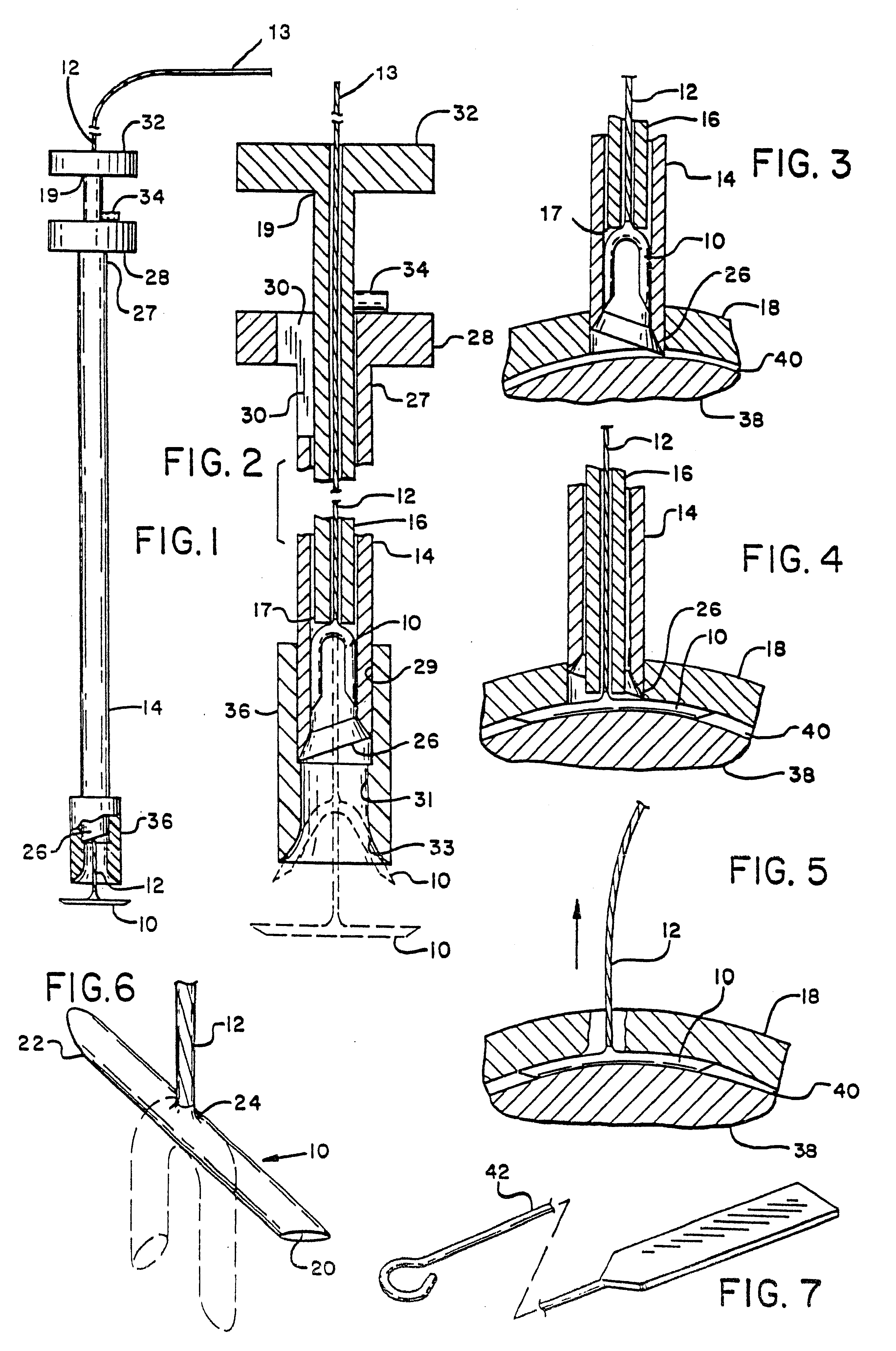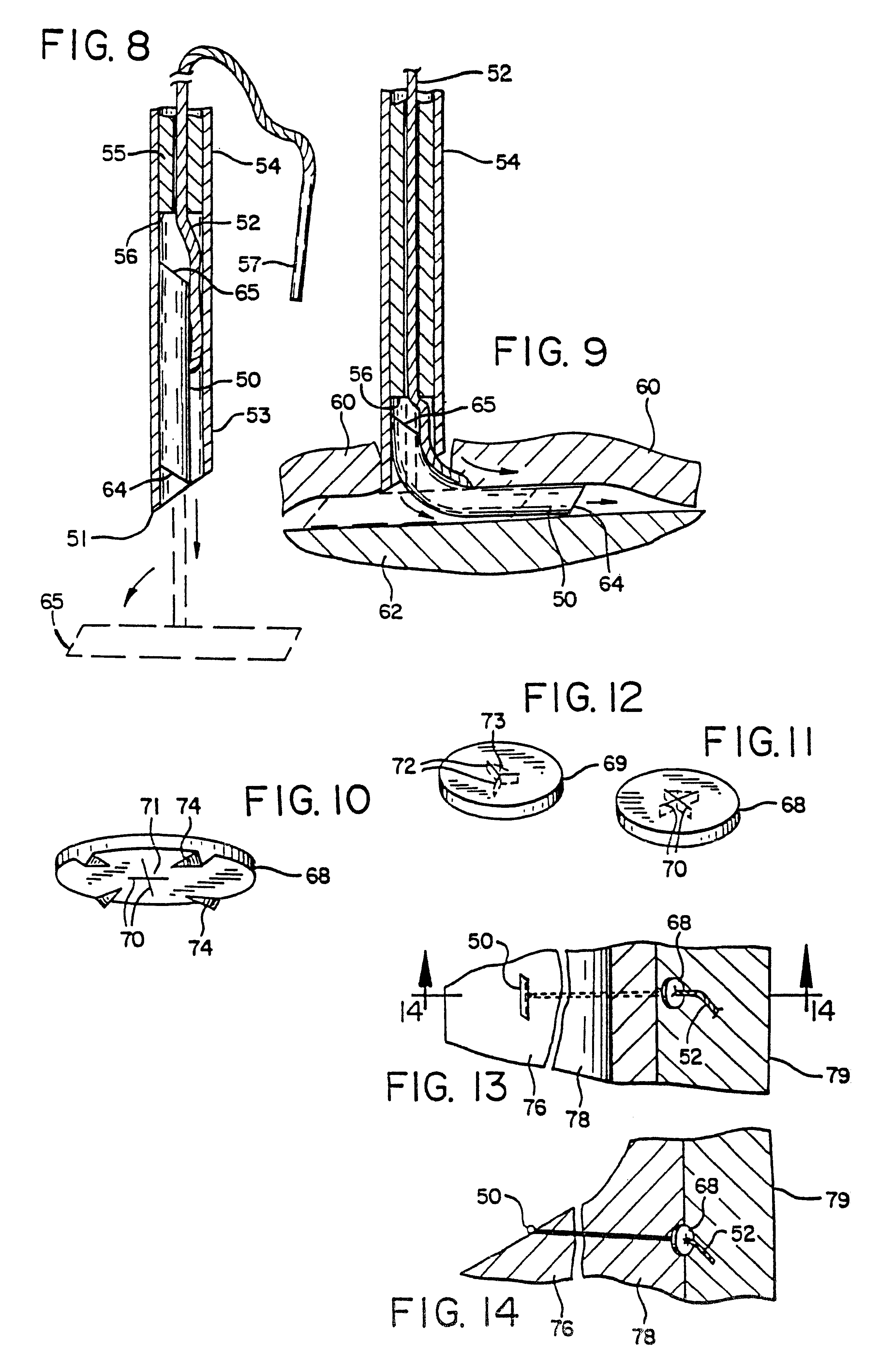Tissue manipulation
- Summary
- Abstract
- Description
- Claims
- Application Information
AI Technical Summary
Benefits of technology
Problems solved by technology
Method used
Image
Examples
Embodiment Construction
One preferred embodiment of the present invention, shown assembled in FIGS. 1 and 2, provides a resiliently deformable anchor member 10, which is attached to a suture 12 and adapted to fit deformably within the tip 26 of a hollow needle 14. A hollow tube 16, also adapted to fit within the needle 14, is used to expel the anchor member from the tip 26 of the needle after the needle has pierced a piece of fibrous tissue, such as the cartilage 18, as shown in FIGS. 3 and 4. Once expelled between the cartilage 18 and bone 38, the anchor member resiliently resumes its normal shape, as shown in FIG. 5. The anchor member of the invention might also be used to secure ligament or tendon, as will be described hereinafter, and the term tissue will be broadly used herein to encompass cartilage, tendons, ligaments and similar tissue.
The anchor member 10, shown in perspective view in FIG. 6, is an elongated cylindrical member. The anchor member 10 has end faces 20 and 22,at the respective extremit...
PUM
 Login to View More
Login to View More Abstract
Description
Claims
Application Information
 Login to View More
Login to View More - R&D
- Intellectual Property
- Life Sciences
- Materials
- Tech Scout
- Unparalleled Data Quality
- Higher Quality Content
- 60% Fewer Hallucinations
Browse by: Latest US Patents, China's latest patents, Technical Efficacy Thesaurus, Application Domain, Technology Topic, Popular Technical Reports.
© 2025 PatSnap. All rights reserved.Legal|Privacy policy|Modern Slavery Act Transparency Statement|Sitemap|About US| Contact US: help@patsnap.com



